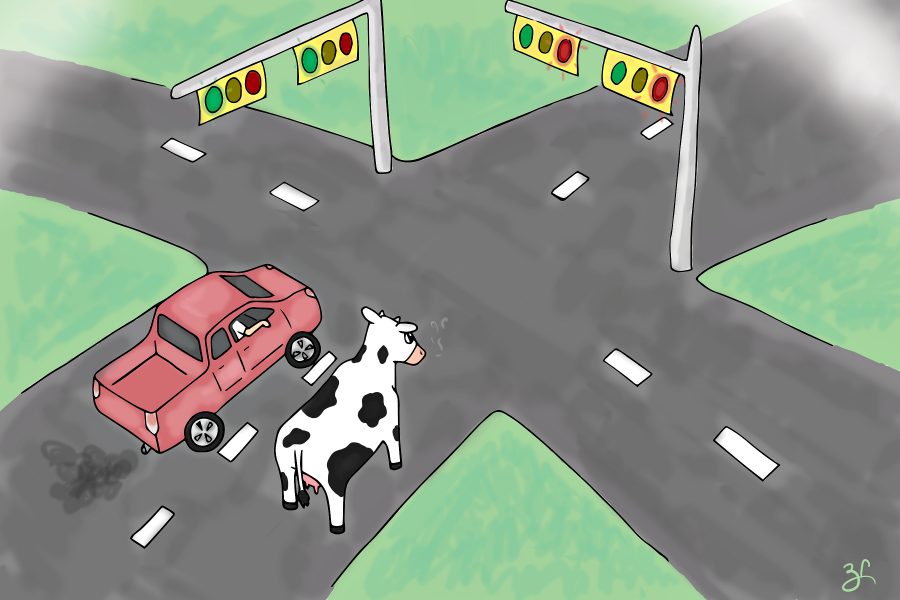Texans enjoy the unique experience of driving down an eighty miles-per-hour highway and witnessing the world’s biggest polluters: the gas and cattle industries. One is a multi-billion dollar industry that produces more methane than any other source worldwide, and the the other is oil and gas.
That’s right, what scientists call “enteric fermentation” — essentially just burps and flatulence from cows — is the largest source of methane (CH4) emissions worldwide. Being 86 times more potent than carbon dioxide (CO2) over a 20-year period, the threat of methane emissions is not one to be taken lightly. Emissions trends differ in Texas, though, where pollution from cattle is lesser than that of the gas industry. Even so, Texas’s production of cattle emissions is still significant.
In the United States, Texas holds the gold medal for the highest gas producing state, a fact that is relatively undisputed. A lesser known yet equally indisputable fact is that Texas also holds the gold for the largest U.S. producer of cattle with 13 percent of the United States’s cattle production. The marriage between the two lies in their wealth and emissions. As the oil and cattle industries have seen money flow into Texas for decades, we’ve seen severe emissions flow out of the Lone Star State.
Frankly, it’s hard to see the end of gas production in Texas. With higher oil prices on the horizon, the slowed Eagle Ford Shale gas hub should be picking back up (and hiring) again soon. Unfortunately for our environment, this means an increase in CH4 and CO2 emissions. While Texas consumers will find it hard to curb their emissions impact from using less gas, there may be a more efficient alternative: eating less beef.
In Texas, the cattle industry didn’t nosedive with oil and gas prices. Giving credit where credit is due, U.S. beef consumption is forecasted to decrease by three percent over the next decade. Still, cows are burping up CH4 at a constant and significant rate. With so much anti-fossil fuel effort on the part of organizations such as Greenpeace and Americans Against Fracking, along with progressive Bernie Sanders-type Democrats, where is the anti-cattle emissions movement?
Especially in this light of Texas’ massive cattle production, Texans interested in combating global climate change should seek an end to livestock consumption. That means not eating beef regularly, if at all. This also makes logical sense for Texans; it’s much easier for regular Americans to stop eating beef than it is for them to stop the oil and gas industry. It’s a simple case of maximizing opportunity.
The benefits of lower cattle consumption don’t stop here.
With widespread drought in the Southwest United States, Americans could save nearly 1,800 gallons of water per pound of beef from which they abstain. What is more, news broke recently that over 60 million trees in the Sierra Nevada are dead due largely to lack of water—so this appears extremely pertinent. Aside from saving the planet, it’ll be good for decreasing your risk of colon cancer, too.
If Texans are serious about decreasing worldwide warming trends, they should cut down on their sirloin steaks and Hopdoddy burgers.
Morris is a government junior from Port Aransas. Follow him on Twitter @gelliottmorris.





















